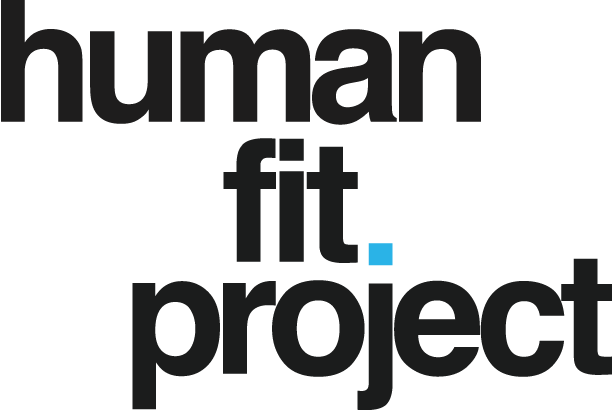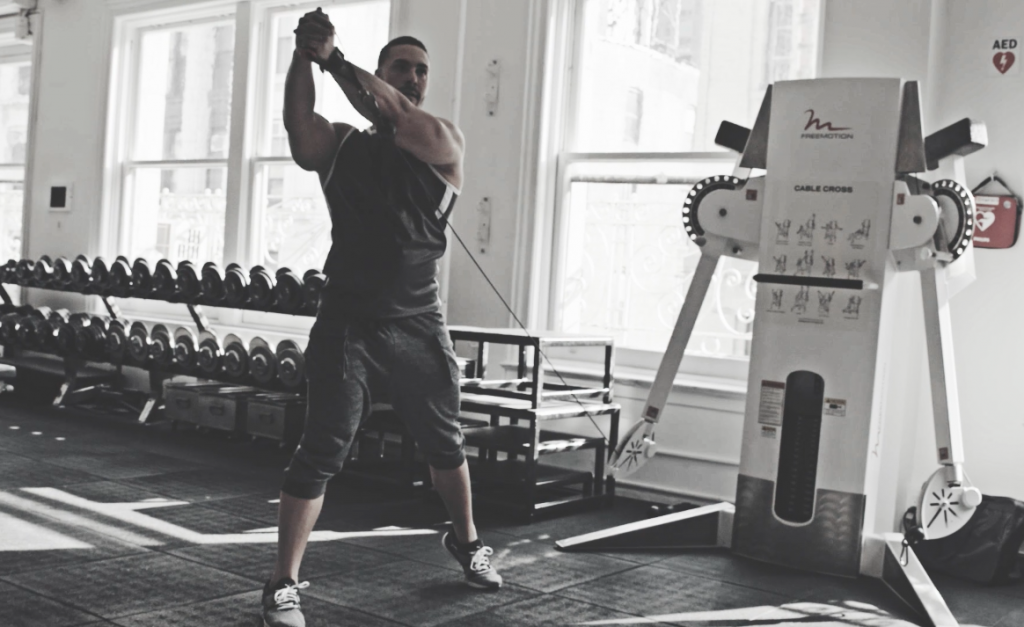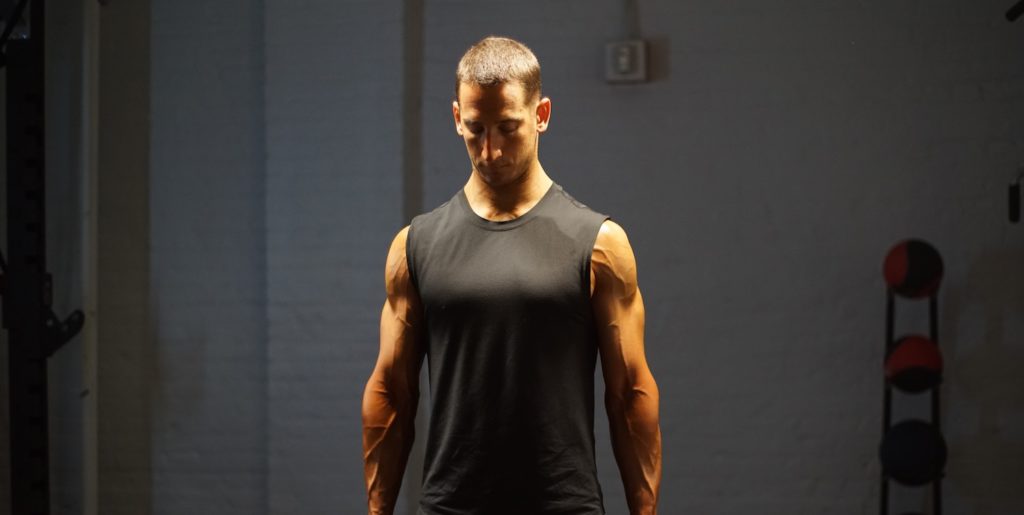Alright! You’ve decided it’s time to finally start to exercise. Now the next question is, where do you actually begin? A great first step would be to learn the best exercises to build the most amount of muscle, burn the most amount of fat, and increase the most amount of strength in as little time as possible. It doesn’t matter if you’re a man or a women, these are the best exercises for beginners — no matter how many new moves are invented on social media.
The next step in your process of starting to exercise would be to follow a plan or a program. We have several exercise plans and programs here on humanfitproject. Some of them focus on building muscle and burning fat while others will improve your endurance, longevity, and athletic performance. If you’re not sure where to begin, explore our fitness and workouts page. If you’ve been following a plan, but your gains have slowed, check out our piece on the 10 ways to build muscle faster for some helpful tweaks.
Now let’s take a look at those best exercises for beginners. Below you’ll find the name of the exercise and a video demonstration of each one showing you the proper form of the exercise along with how to instructions and important things to remember while doing them.
humanfitproject expert contributor Mike Beringer (@mikey_fitness) provided the video demonstration of these exercises.
Work Your Core with the Plank
The plank really gets you in tune with all the muscles of your core. A exercise for anyone with plenty of variations to keep things interesting and challenging.
How to do a plank:
- Start in a basic push up position but with your elbows on the ground instead of your hands.
- Engage your core and glutes.
- Keep your lower back straight.
- Hold tight for the prescribed amount of time.
Work Your Upper Body with the Push Up
Get your core, chest, shoulders, and triceps with the pushup. Another move with plenty of variation. Not reason not to simply bang these out anywhere.
How to do a push up:
- Start with your hands flat on the ground and your legs extended behind you.
- Keep your elbows slightly tucked to your side and your core engaged.
- Lower yourself to the ground while keeping your back straight.
- Slightly pause at the bottom, slight pause at the top.
- Repeat the process.
Work Your Triceps with the Bench Dip
Really want to target those triceps? Here’s a basic you can do anywhere. (However, if this feels a little strange on the shoulders—skip it)
How to do a bench dip:
- Place your hands behind your back on a bench with your knees bend and feet out in front of you.
- Keep your head and torso upright.
- Engage your core.
- While keeping your elbows tucked to your side, slowly lower your back down towards the ground.
- Once your arm is approximately parallel with the ground, pull yourself back up using your triceps.
- Pause at the top and repeat the process.
Work Your Posterior Chain with the Glute Bridge
Too many neglect their glutes and hamstrings. The glute bridge is a great way to get the job done without overcomplicating things.
How to do a glute bridge:
- Start by laying flat on your back with your knees slightly bent.
- Engage your core.
- With weight on your heels, drive your hips up into the air.
- Squeeze your glutes and hamstrings at the top.
- Slowly lower your hips down and repeat for the prescribed number of reps.
Work Your Entire Body with the Deadlift
One of the big lifts that hits just about every muscle in the body. Learn this move the proper way and your overall strength and power will skyrocket.
How to do a barbell deadlift:
- Stand over a loaded barbell with your feet about shoulders-width apart and your toes very slightly pointed outward.
- Engage your core, drop down, and grip the bar at shoulders-width.
- Keep your back as straight as possible at all times.
- Push your hips back and pull the weight up from your heels while engaging your lats, glutes and hamstrings.
- Pause at the top and repeat the process.
Work Your Upper Body with the Bench Press
Another big lift, but more focused on upper body strength and power. Cycle this move with dumbbell bench presses for variety and plateau breaking effects.
How to do a barbell bench press:
- Flat flat on your back on a bench.
- Grip the barbell with your hands slightly wider than shoulder-width.
- Engage your core, retract your shoulder blades, and lift the barbell off the rack.
- Slowly lower the bar down to your chest while tucking your elbows and maintaining a slight and natural arch in the low back.
- At the bottom, drive through the heels of your feet and put the weight up to the top.
- Squeeze, then repeat the process.
Work Your Lower Body with the Squat
Arguably one of the best exercises for the human body. Every muscle is engaged from head to toe. Can’t quite do a barbell back squat like this yet? Start with body weight squats or the goblet squat. (Demo’d below)
How to do a barbell back squat:
- With a barbell resting across your lower traps, stand with your wide approximately shoulders-width with your toes slightly pointed out.
- Engage your core and slowly lower your body while keeping your hips and butt back.
- Keep your knees from folding inward or forward.
- At the bottom (when your thigh/quads are about parallel with the floor) drive back up with the weight on your heels.
- Extend your hips at the top and repeat the process.
Work Your Lower Body and Core with the Goblet Squat
Holding the weight in front is great for beginners still learning the basic mechanics of a squat while also really engaging your core muscles.
How to do a goblet squat:
- Stand with your feet about shoulders-width and your toes slightly pointed outward.
- Hold a dumbbell or kettlebell in front of your chest with both arms.
- Brace your core.
- Slowly squat down while keeping your butt back.
- Don’t let your knees cave inward.
- Keep your elbows inside your knees and don’t let the weight drop below your chest.
- Slight pause at the bottom, then explode up to the top while driving from the heels of your feet.
Work Your Lower Body and Core with the Goblet Split Squat
Similar to the goblet squat but with a subtle twist. This will more specifically target the glutes, hamstrings, and quads depending on the length of your stride. Holding the weight in front also activates the core.
How to do a goblet split squat:
- Stand with one leg a short strides-length ahead of the other.
- Similarly to the goblet squat, hold a dumbbell or kettlebell in front of your chest with both hands.
- Brace your core.
- Drop one knee down to the ground while keeping the weight in front of you.
- While keeping your back straight, drive back up with weight on your heel.
Work Your Shoulders with the Overhead Press
Another big lift that creates big upper body gains. While your shoulders are taking on most of the brunt, your triceps and muscles of the core are getting it too. Alternate with dumbbell overhead presses for variety.
How to do a standing overhead press:
- Stand up straight and rest a barbell across your shoulders in front of you with your hands slightly outside shoulders-width.
- Engage your core.
- Explosively press the weight up over your overhead and slightly pause at the top.
- Slowly lower the weight down and repeat the process.
Work Your Back with the Dumbbell Row
The back is huge muscle group, but there are also a lot of little details. Learning the dumbbell row and the subtle movement pattern options there are can really take your physique to new levels.
How to do a dumbbell row:
- Lean forward over a bench of dumbbell rack.
- Keep your back straight and your core engaged.
- Engage your lats while pulling a dumbbell back.
- Squeeze at the top and slowly lower back down.
Work Your Back with the Barbell Bent-over Row
When you want to make that big back work as a complete unit—here’s the move. Up there in terms of being a “big lift” like the bench press, squat, deadlift, and overhead press.
How to do a barbell bent-over row:
- With your hands at shoulders-width and with an overhead grip, hold a barbell in front of your body.
- Engage your core and slightly bend forward while keeping your back straight.
- Pull the barbell up towards your chest by using your lats.
- Squeeze at the top, slowly lower the weight, and repeat the process.
Work Your Back with the Low Cable Row
Another way to tap into the smaller details of the back. The seated position removes any additional support your may get from your legs during standing versions.
How to do a cable low row:
- Sit at a cable station with your slightly very slightly bent.
- Engage your core, keep your back straight, and shoulders blades retracted.
- Pull the cable towards your stomach while squeezing your lats.
- Pause at the finish position and repeat the process.
Work Your Shoulders with the Dumbbell High Pull
The dumbbell high pull will add a pop of muscular size to your shoulders while counter-balancing the overhead presses with more of a pull.
How to do a dumbbell high pull:
- While holding your dumbbells, one in each hand, stand about shoulder-width apart.
- Core your core.
- Explosively extend your hips while pulling the dumbbells up and away from your body.
- Lift the weight no higher than your chest.
- Slowly lower the weight back down and repeat.
Work Your Core with the Cable Woodchop
When you want to give your core a little more, adding the twisting and turning of a cable wood chop is a good option. Similarly to the hanging knee/leg raise, you’ll feel it after a single set.
How to do a cable woodchop:
- Stand next to a cable or pulley station.
- Engage your core.
- Pull the cable up and away from your body while keeping your arms straight.
- Slowly lower the weight back and repeat.
Work Your Back with the Cable Pullover
This move adds an element of stretching to the pull motion. That stretch will hit the muscles of your back differently than a row, pull up, or pulldown.
How to do a cable pullover:
- Stand in front of a cable or pulley station.
- Set the pulley to the top peg.
- Engage your core.
- Keep your shoulders back and chest up.
- With your arms straight but with a slight bend, pull the weight down towards your thighs.
- Slowly return the weight back to the top and repeat.
Work Your Back with the Cable Lat Pulldown
More fine details of the back here with the lat pulldown with a lot of grip and handle variations. You can go close-grip, wide-grip, and everything in between. The move also helps bring stability to your core.
How to do a cable lat pulldown:
- Grab the cables at a pulley or cable station with your arms slightly wider than shoulder-width.
- Engage your core, straighten your back, and retract your shoulder blades.
- Slowly pull the weight down to your chest while engaging the lats.
- Slight pause at the bottom, slowly return back to the top and repeat.
Work Your Biceps with the Barbell Curl
Probably the most common exercise ever, even though it’s incredibly specific to one small muscle group—the biceps. Make note of the cues to improve your pumps, you could be missing out.
How to do a barbell biceps curl:
- Stand upright holding a barbell in front of your with your arms extended and elbows tucked at your side.
- Slowly curl the weight up and squeeze at the time.
- Fight momentum while slowly lowering the weight back down to the bottom.
- Full extend your arms and repeat the process.
Work Your Neck/Traps with the Shrug
A lot of other pulling exercises will help bring up the traps, but it’s not a bad idea to give them some extra work. Shrugs will target the area.
How to do a dumbbell shrug:
- Stand up straight while holding two dumbbells, one in each hand.
- Brace your core.
- Pull your arms straight up at your sides while engaging your traps.
- Avoid rolling your shoulders forward or backwards.
- Squeeze at the top and slowly lower the weight.
Work Your Core and Abs with the Leg Raise
This will work your abs like no other move. One set of these and you’ll feel it. Start with knee tucks and gradually progress into leg raises. Can’t do either? Start on the floor.
How to do hanging knee or hanging leg raises:
- Hang from a pull up bar with your arms extended.
- Keep your shoulders back.
- Engage your core and lats.
- Slowly lift your legs/knees up towards your chest.
- Fight momentum while lowering your legs/knees back down.
We even pulled together a program using these moves. For those that are advanced, we call this a Transition. It’s something to shift to while in between other programs. For the newbies, we’ll go ahead a say this is an Introduction plan.
Introduction & Transition: The plan beginners and intermediates can follow
Another option is to download our 12-week Accelerated Starter’s plan here.




